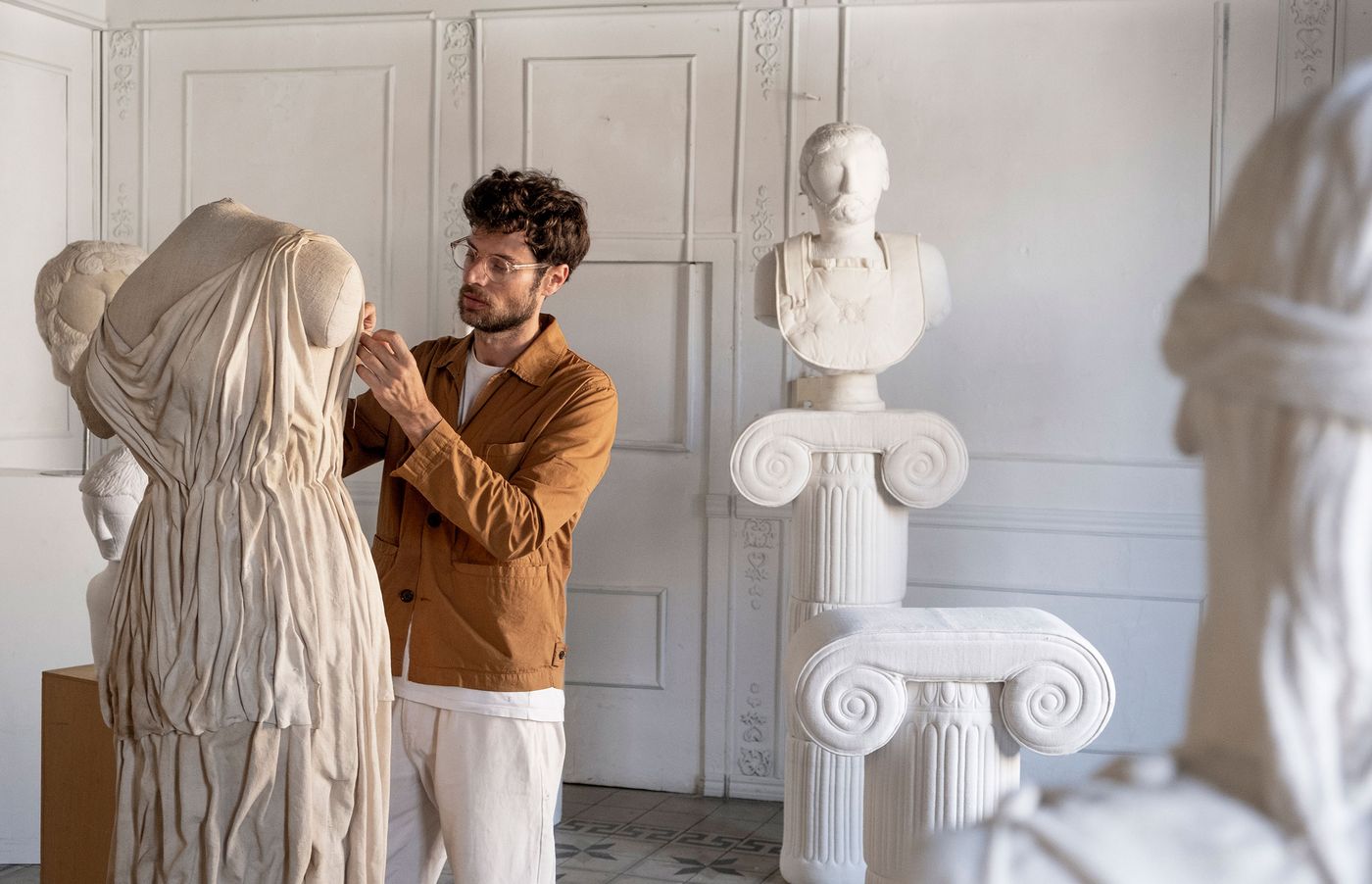
Textile Ruins: Sergio Roger’s Subversive Tribute to Classical Sculpture-Making
Words by Eric David
Location
Textile Ruins: Sergio Roger’s Subversive Tribute to Classical Sculpture-Making
Words by Eric David
Classical sculpture looms large in the Western canon so it’s not uncommon for contemporary artists to incorporate the cultural legacy of ancient Greco-Roman statues into their own work. From the onyx, sodalite and malachite versions of Italian sculptor Massimiliano Pelletti, to the tattooed versions of Italian artist Fabio Viale, and the candy-hued digital replicas of Korean graphic artist Lee Sol, there’s no shortage of artistic approaches to historic sculpture-making and yet we were still blown away when we came across the fabric sculptures of Barcelona-based artist Sergio Roger. Comprising busts of Roman emperors, statues of mythological princesses and Ionic columns, the artist’s “Textile Ruins” series is a tribute to classical Greek and Roman art and architecture as well as a reflection on the concepts of permanence and grandeur that they’re associated with.
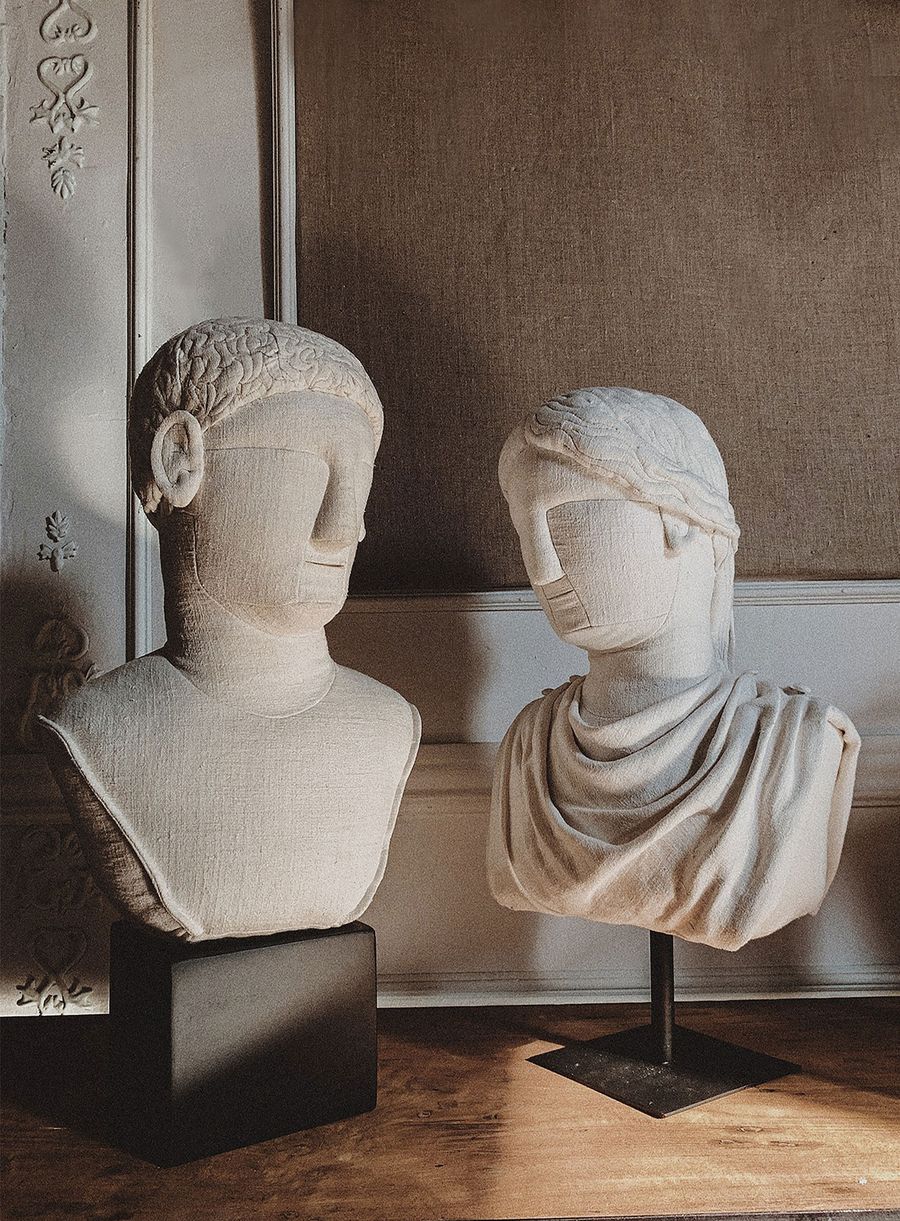
Augusto & Selene. Photography © Sergio Roger.
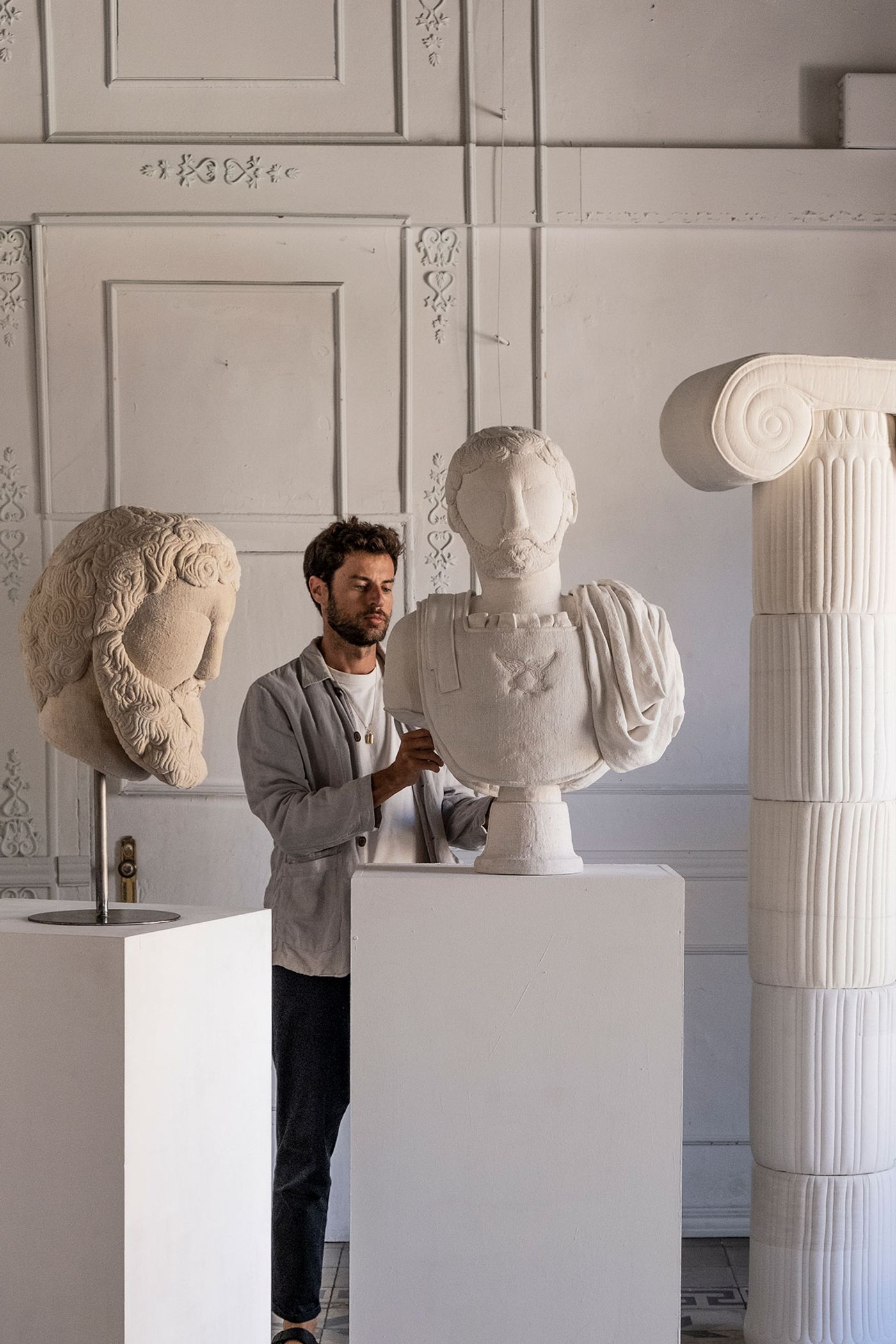
Antoninus Pius. Photography © Sergio Roger.
Made from 100-year-old antique linen, which Roger painstakingly stiches and drapes to create the appearance of stone, the fabric sculptures astound in their uncanny beauty and subverting whimsy, as visitors at his recent show at the Rossana Orlandi Gallery in Milan during Milan Design Week can attest. Treading a fine line between homage and irony, Roger is interested in exploring ancient artistic representations of beauty as much as revealing our misconception about them – case in point, our misguided belief that Greco-Roman marble sculpture was indeed white. Yatzer recently caught with the artist to talk about his practice, his interest in fabrics and the fictional side of archaeology.
(Answers have been condensed and edited for clarity.)
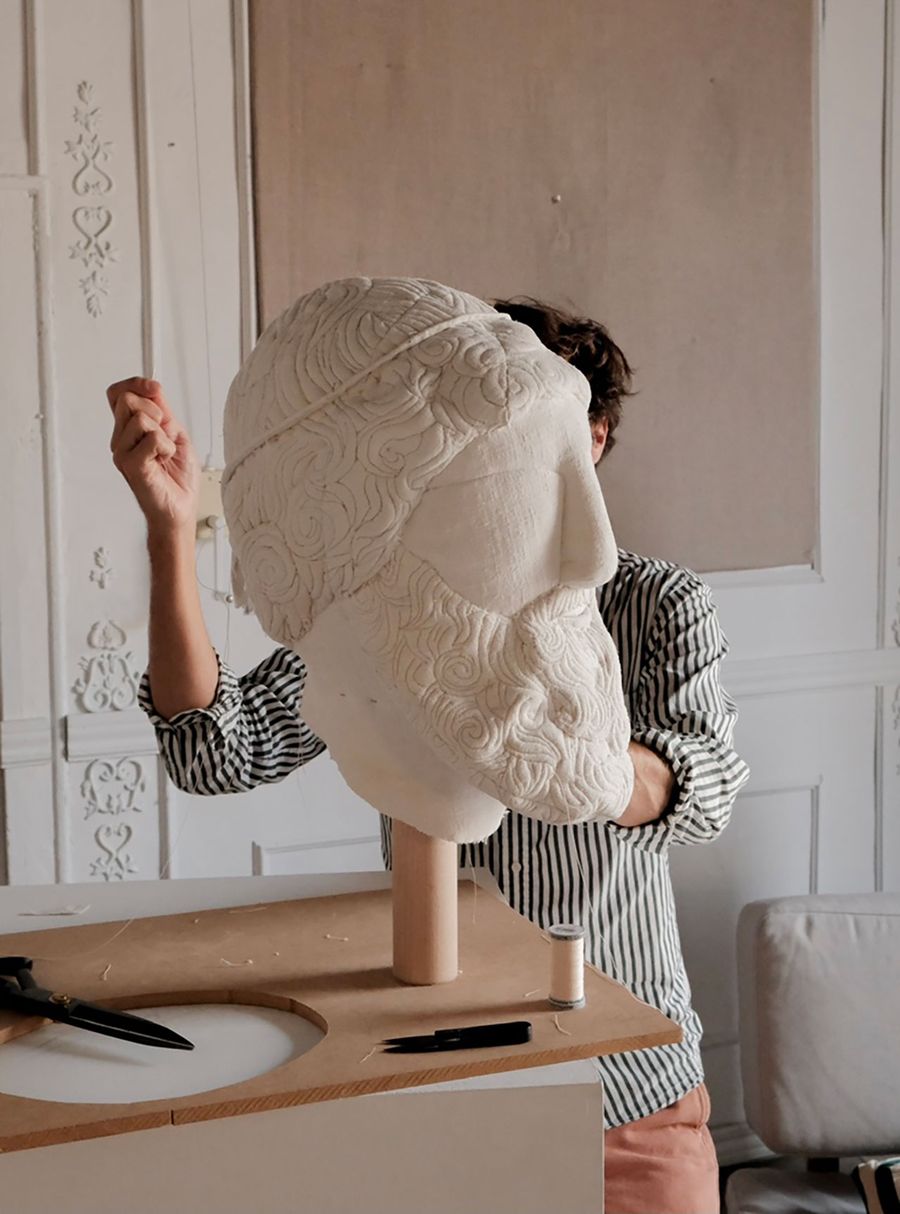
Photography © Sergio Roger.
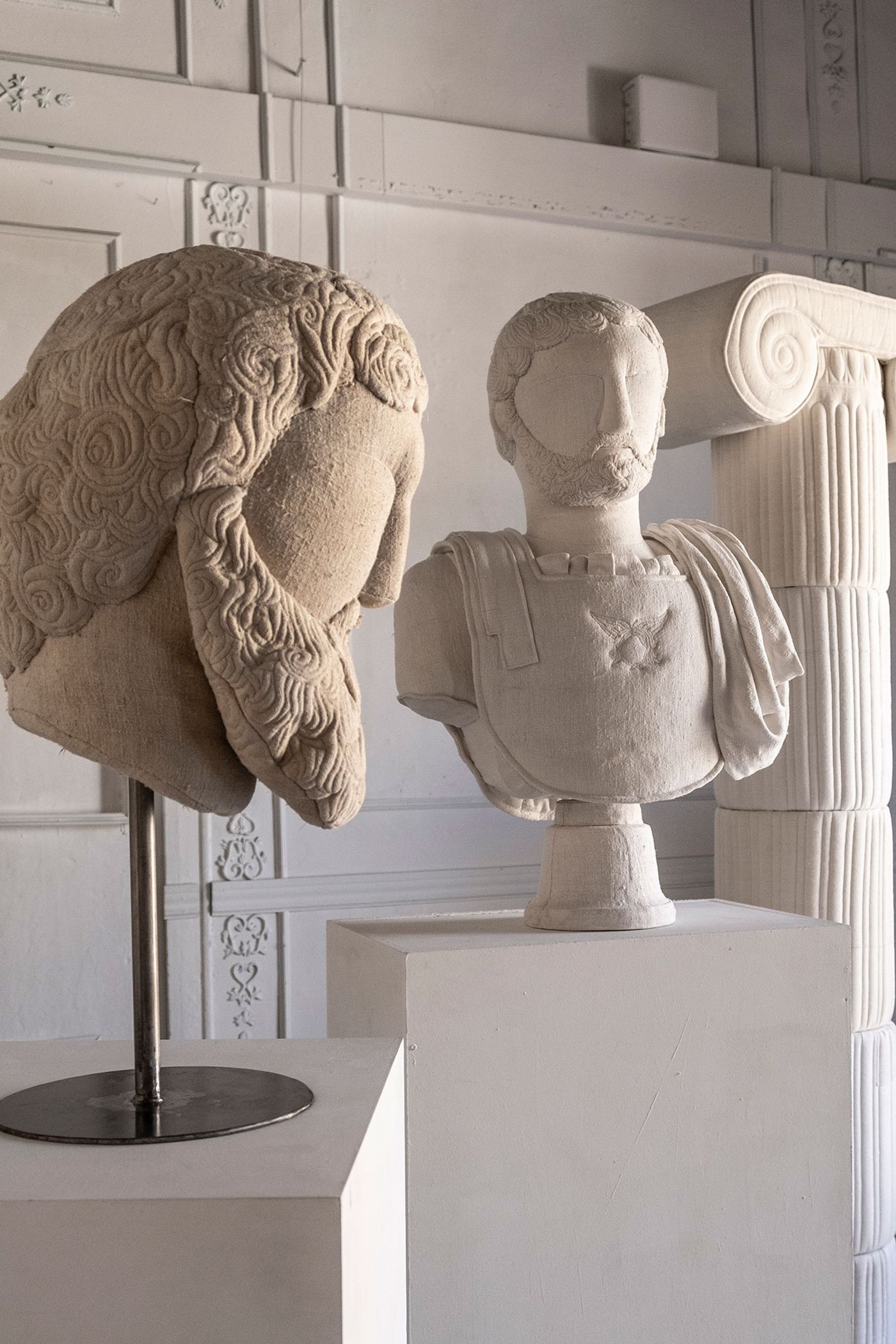
Photography © Sergio Roger.
Where did the idea behind your textile sculptures come from? Were you always interested in textiles?
My relationship with textiles goes back a long time. From an early age, I naturally felt an inclination for this material and when I was around 16, I taught myself to hand stitch. Soon after that I got my first sewing machine. However, I was never interested in sewing garments; instead I created bizarre stuffed characters that I enjoyed giving away to my friends and relatives. At the same time, sculpture has always been my greatest passion and I have great admiration for artists who worked with textiles such as Louise bourgeois or Joseph Beuys.
Talk us through your creative process. What do you look for in the classical sculptures and antique artefacts that you recreate? How faithful are you to the original design? Do you improvise?
After a long time experimenting with soft sculpture, I decided to challenge myself technically and see how far I could get by reproducing actual classical artifacts. With the first textile busts that I ever made I tried to reflect the archetypical classical beauty in a general way. Later on, I started to look for inspiration in actual antique sculptures based on mythological or historical characters from museums, books or the internet.
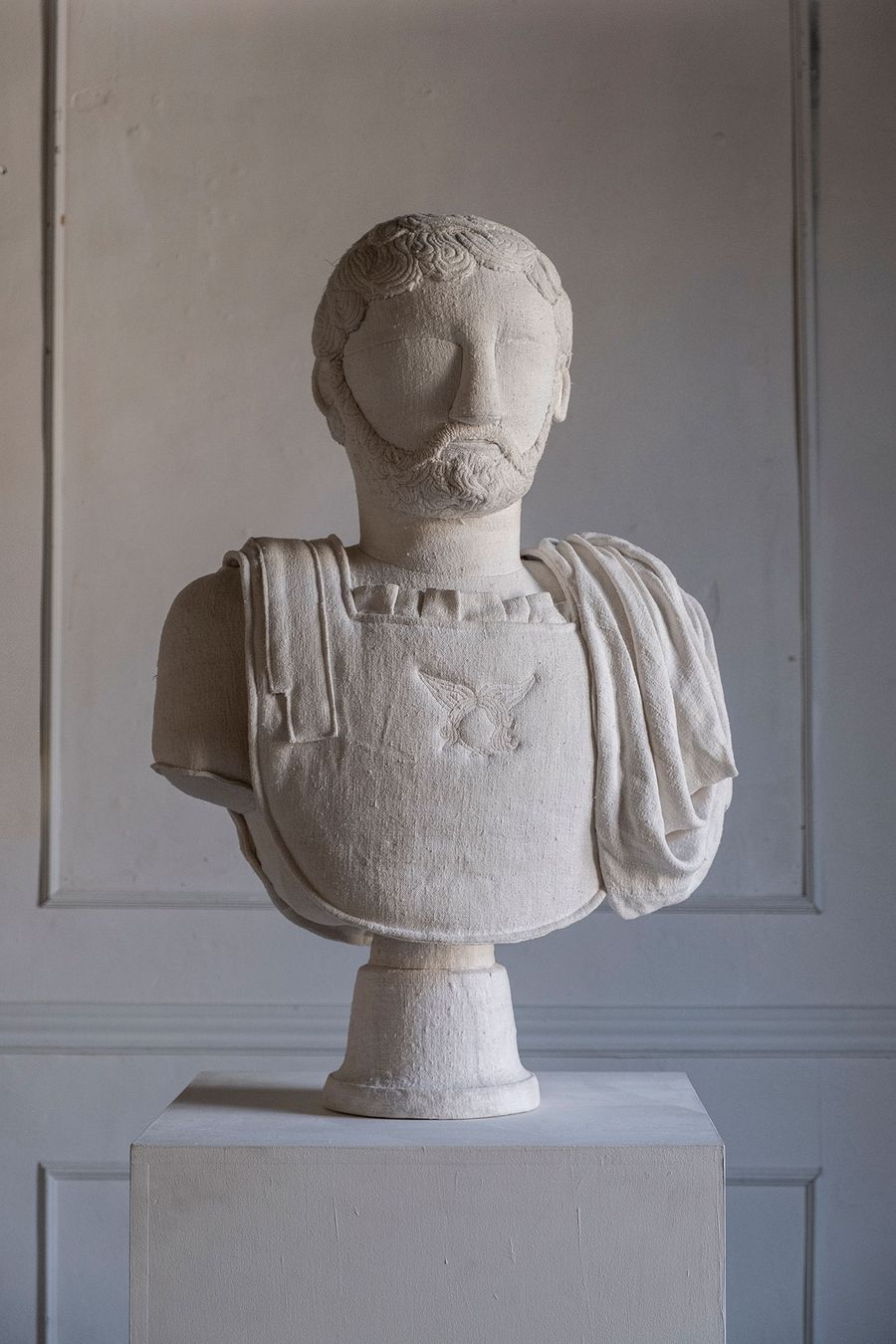
Antoninus Pius. Photography © Sergio Roger.
"Improvisation and free interpretation are important aspects of my creative process, especially because working with textiles has technical limitations when it comes to accuracy".
However, I sometimes become a bit obsessive trying to reproduce the original pieces in the most faithful way. Take Antoninus Pius for example. While browsing online, I came across an imperial Roman marble bust that caught my attention. I started collecting images from all angles but never found one from the back. When my version was already in an advanced stage, I found out that the original bust was located at the Museo del Prado, so I travelled to Madrid just to learn exactly what the back side of the original sculpture looked like.
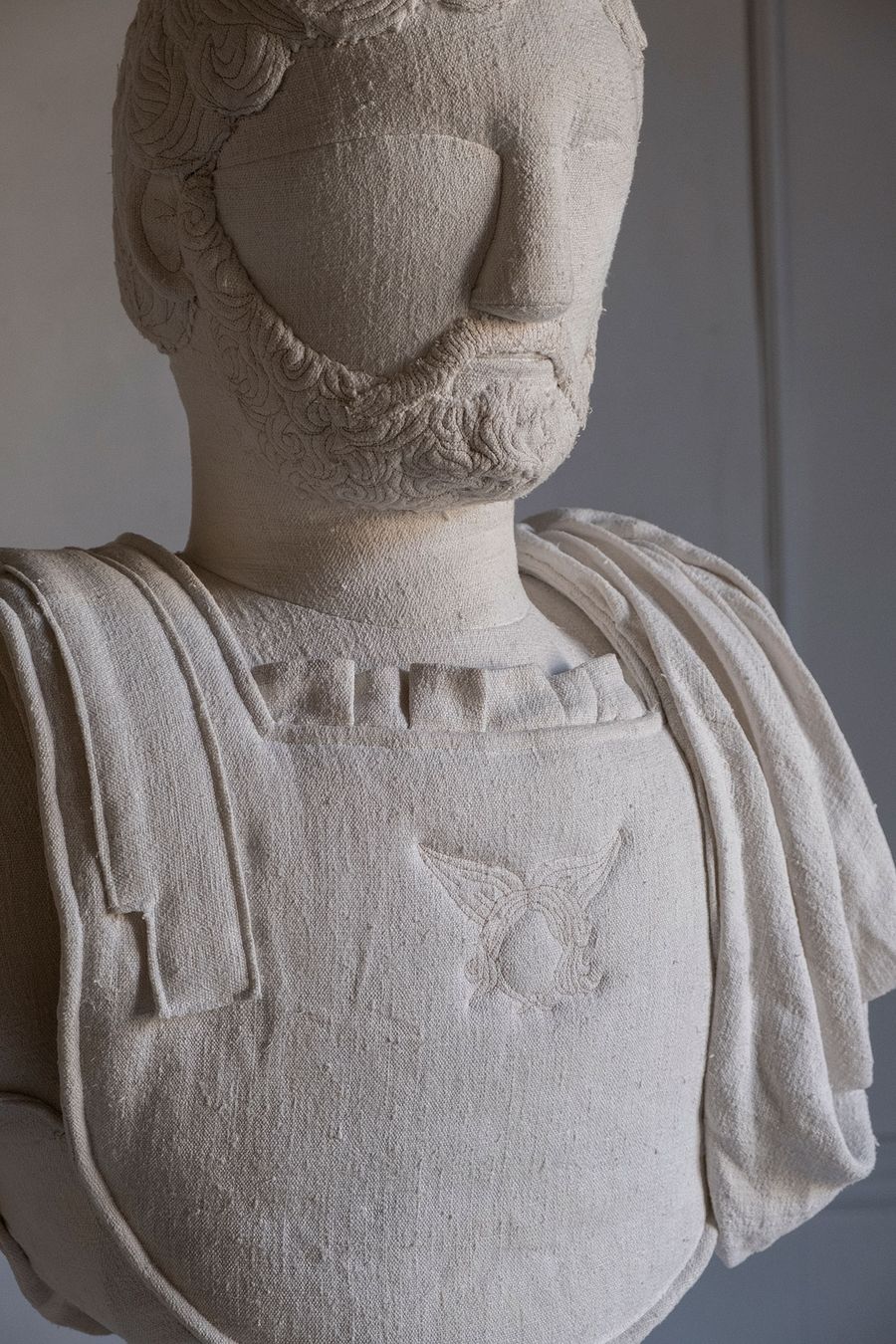
Antoninus Pius.Photography © Sergio Roger.
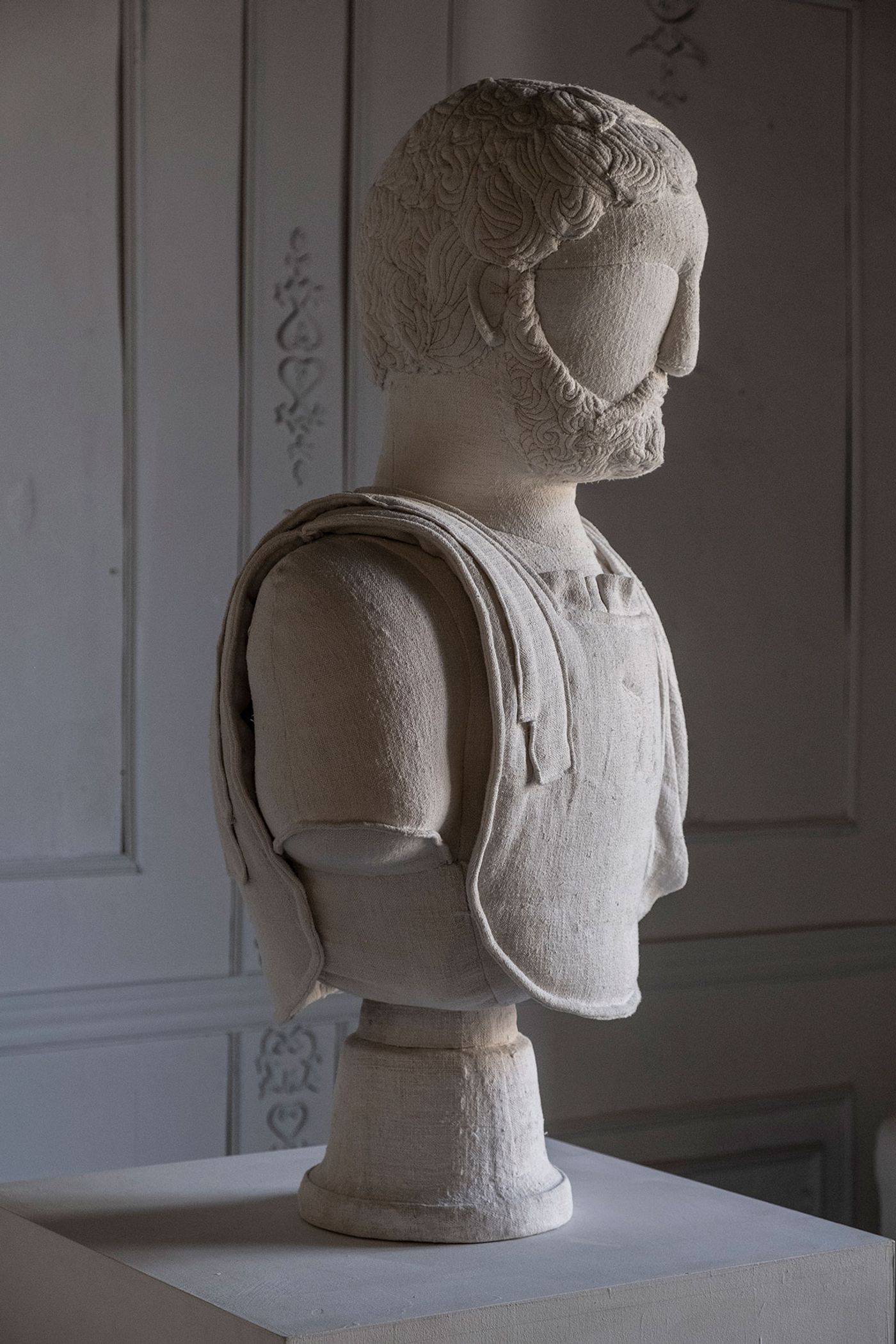
Antoninus Pius.Photography © Sergio Roger.
How much time do you spend designing and constructing each piece? How laborious is the crafting process?
The production process is extremely elaborate and time demanding. It’s hard to say how much time I spend on each piece because I always work on several sculptures at the same time. However, I would roughly say that I need several weeks and sometimes over one month or two for a single piece.
What kind of sewing techniques do you use? Did you have to learn them from scratch?
When I seek a specific effect, I research existing techniques but I also enjoy trying out new things till I reach the right outcome. The methods that I often use come from tailoring and upholstery such as pattern making, quilting, embroidery, trapunto, starching, botanical dye etc.
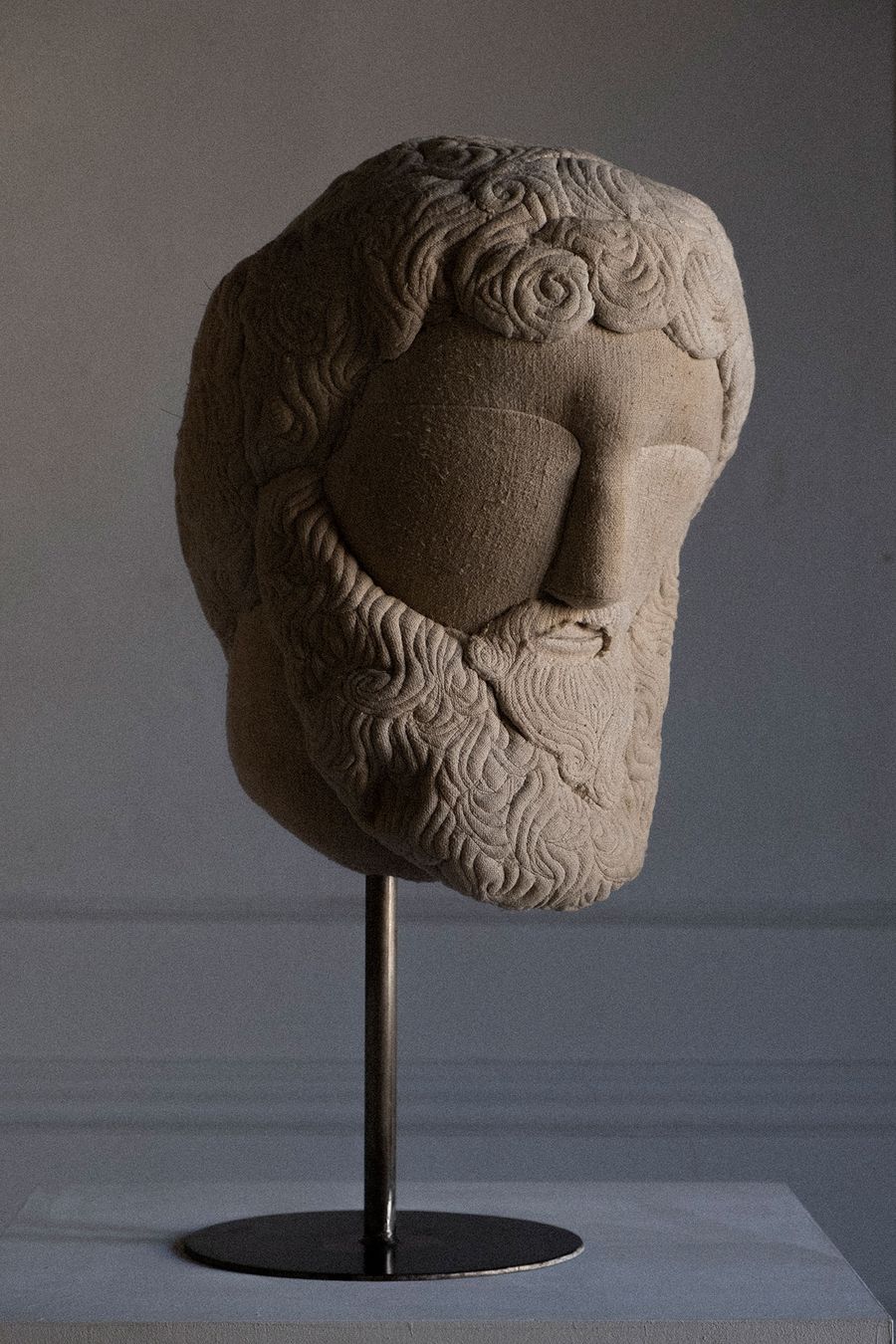
Jupiter II.Photography © Sergio Roger.

Jupiter II. Photography © Sergio Roger.
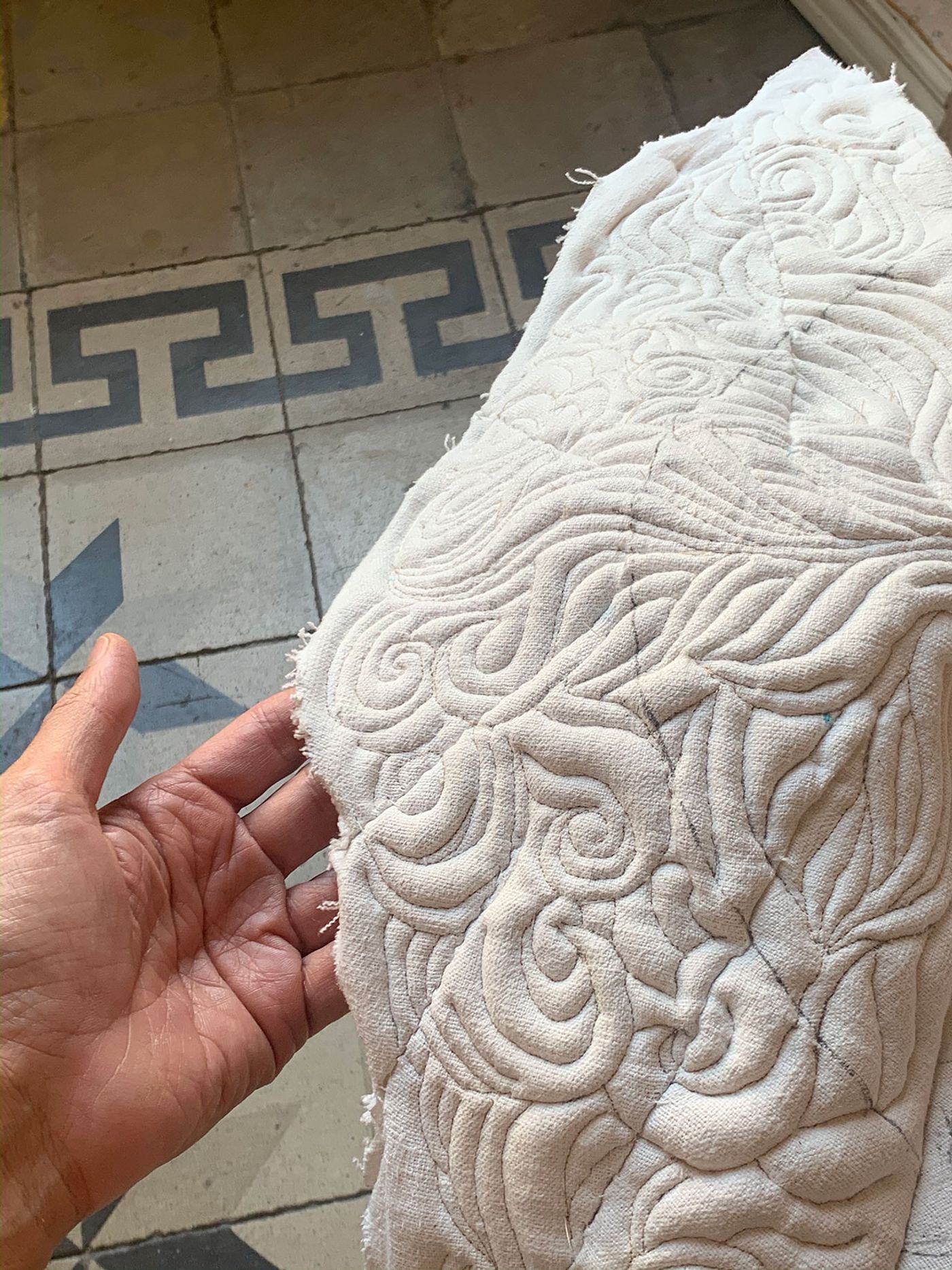
Photography © Sergio Roger.
Why antique linen? How difficult is it to find such materials? What are the challenges you have to deal with in comparison with contemporary fabrics?
I am obsessed with antique fabrics and I love to collect them. Antique linen resembles stone and gives the sculptures the right patina effect. Furthermore, this fibre was created 5,000 years ago and it is closely linked to ancient Mediterranean civilizations. I buy the linens mainly from a specialized textile antique shop in Barcelona, from markets in the south of France or I purchase them online. The textiles that I use are around 100 years old but are still in great conditions. What I love about antique linen is that the longer it lives, the more appealing it looks.
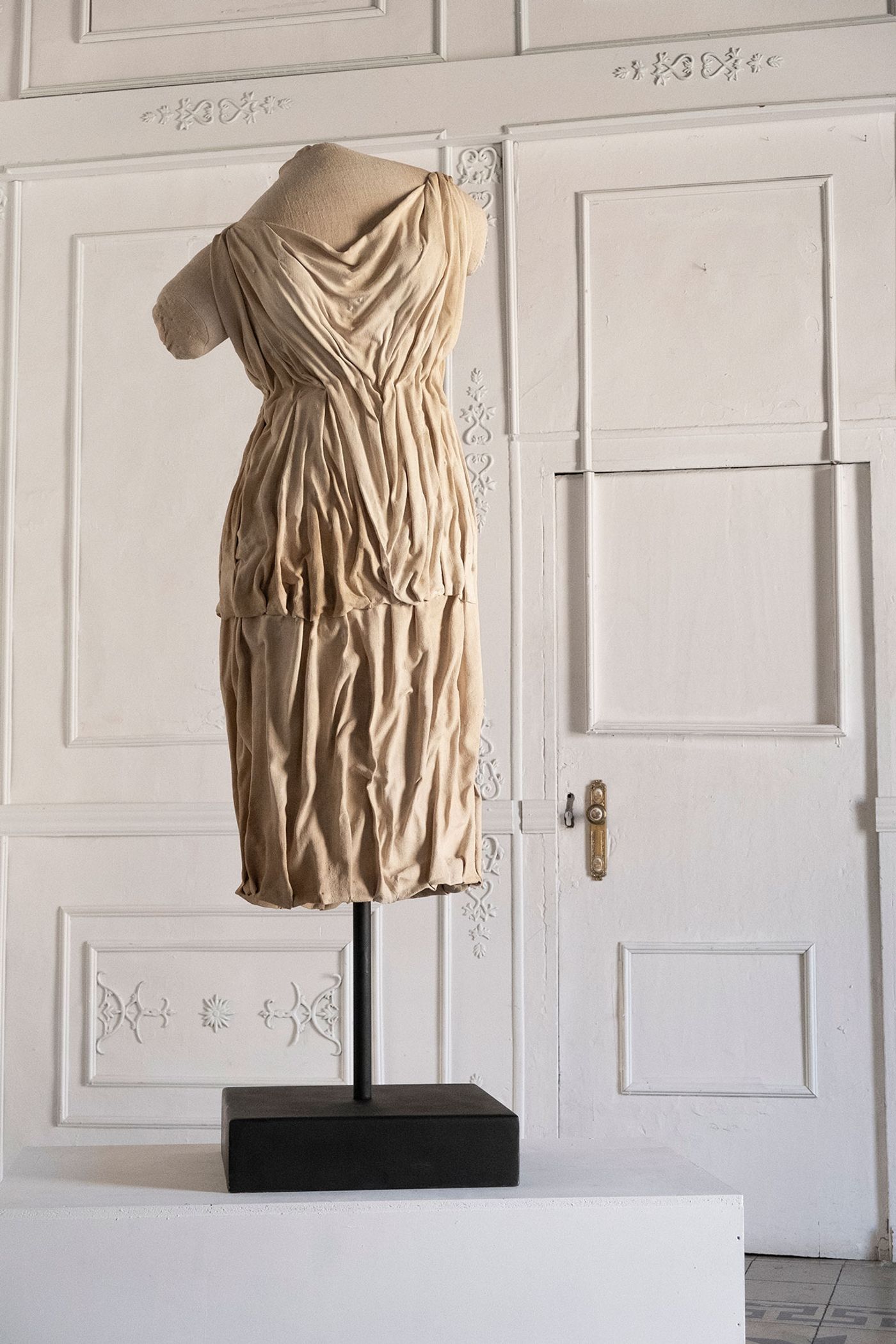
Cyrene.Photography © Sergio Roger.
What is your relationship with dressmaking and fashion design?
Directly. None. I do however collaborate very often with skilled professionals from this field such as pattern makers, seamstresses and tailors. In fact, my current assistant studied fashion design and shoe making.
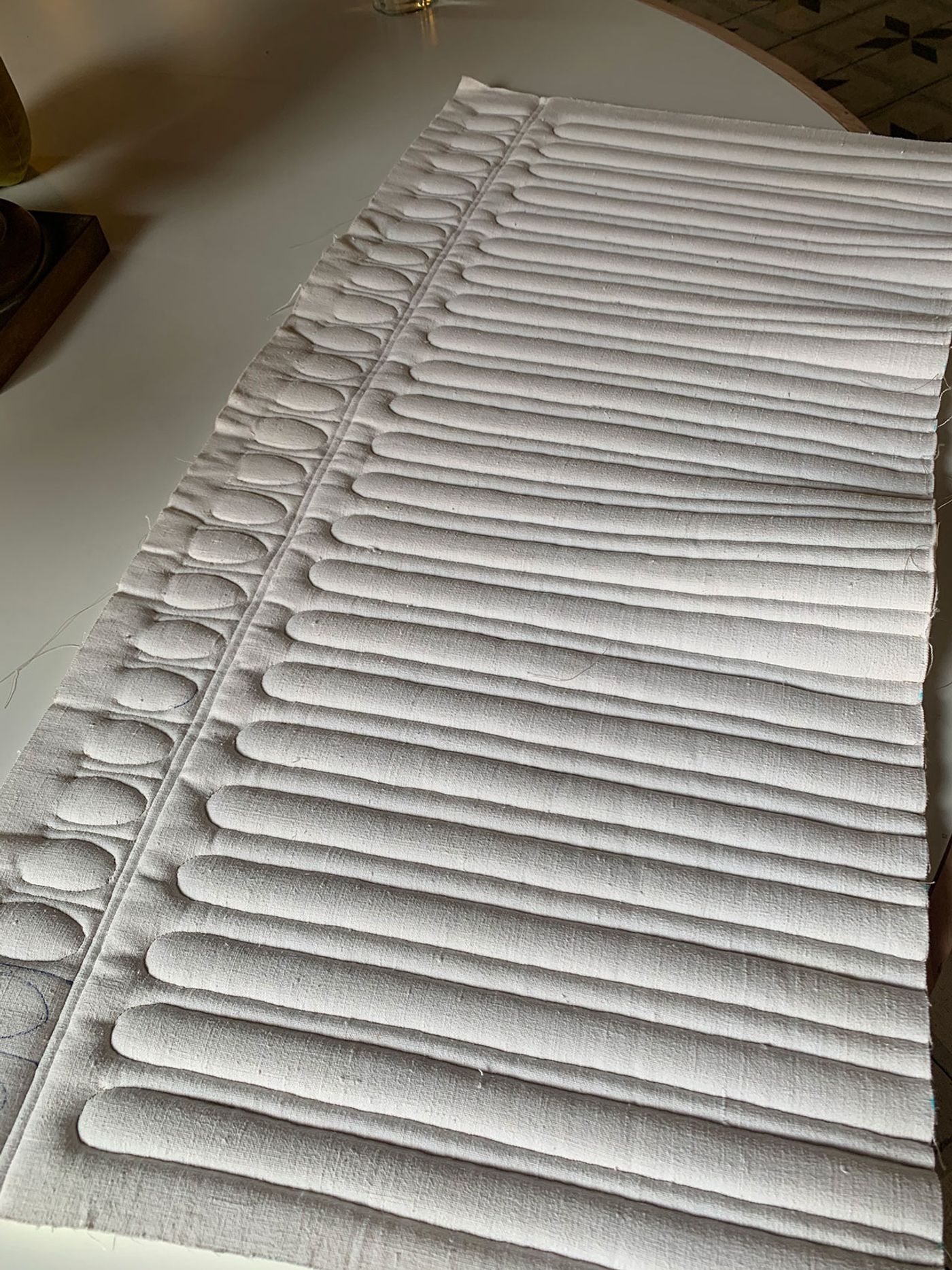
Photography © Sergio Roger.
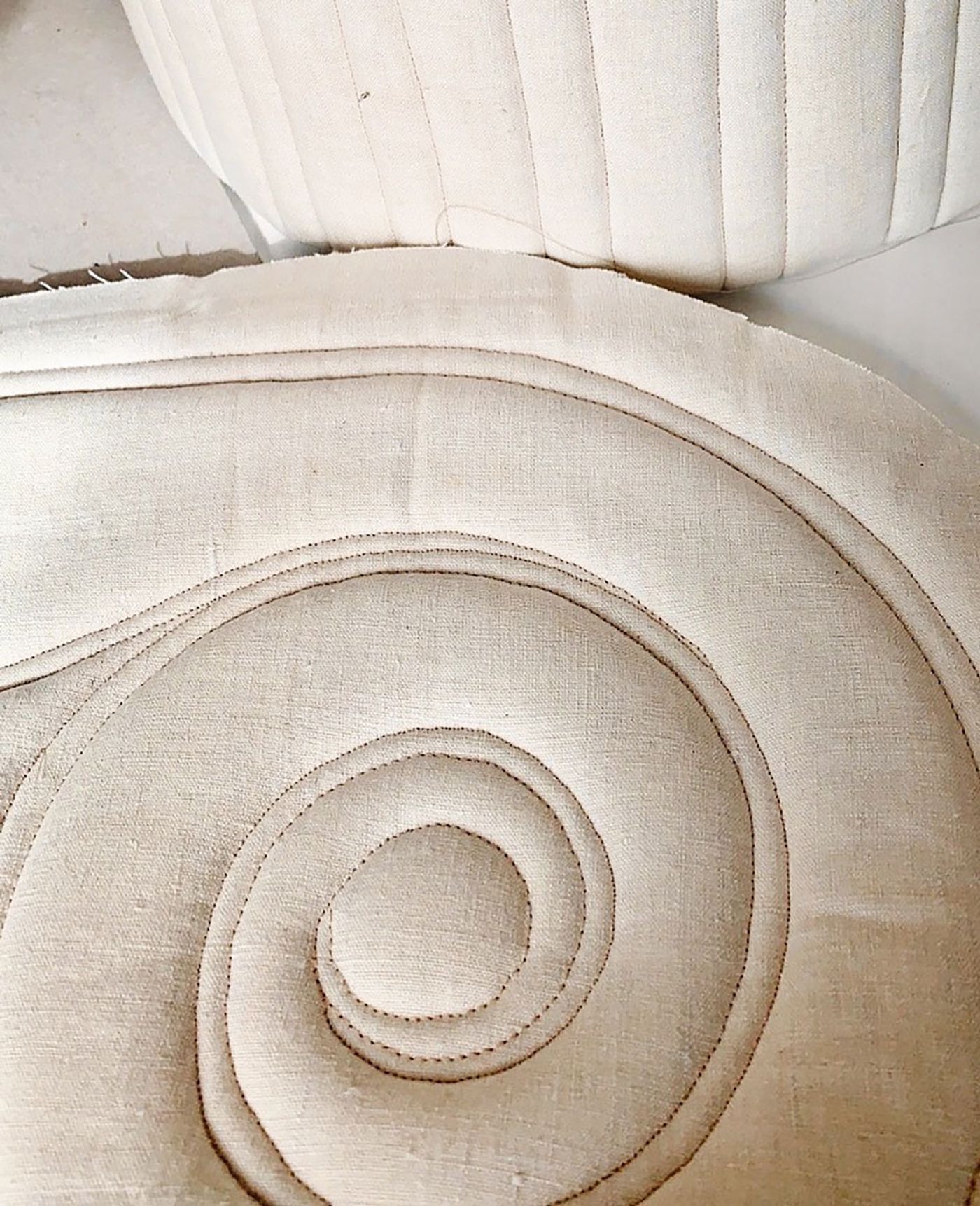
Photography © Sergio Roger.
In our collective imagination, classical art and architecture is inextricably tied to notions of timeless beauty and grace. What kind of messaging are you looking to convey with the Textile Ruins series?
My idea with this series is to challenge our perception and understanding of history through archaeology. Specifically, I want to highlight the fictional side of archaeology – an aspect based on loss and speculation that emerged in the late 18th century during the European imperial period and which has consequently been reinforcing a Western white male narrative ever since.Take the concept of white colour in ancient Greco-Roman Art. This happens to be the biggest conspiracy in Art History. It is well known that sculpture and architecture from this period were both painted in bright tones. However, our vision of the classical world still refuses to accept this fact in order to maintain the values of virtue and pureness that we associate with a lost ideal white world.
Another example is the restoration works of the Minoan Palace of Knossos in Crete which was carried out by the famous Archaeologist Sir Arthur Evans at the turn of the 20th Century. Evans hired several artists, most of them based in Paris at the time, in order to restore the main murals. The original paintings were in very bad condition and were lacking most of their features which meant that the artists had to interpret the works in order to complete the murals. It is very interesting to see how these artworks were restored in a very clear art-deco fashion which happened to be the artistic trend at the time.
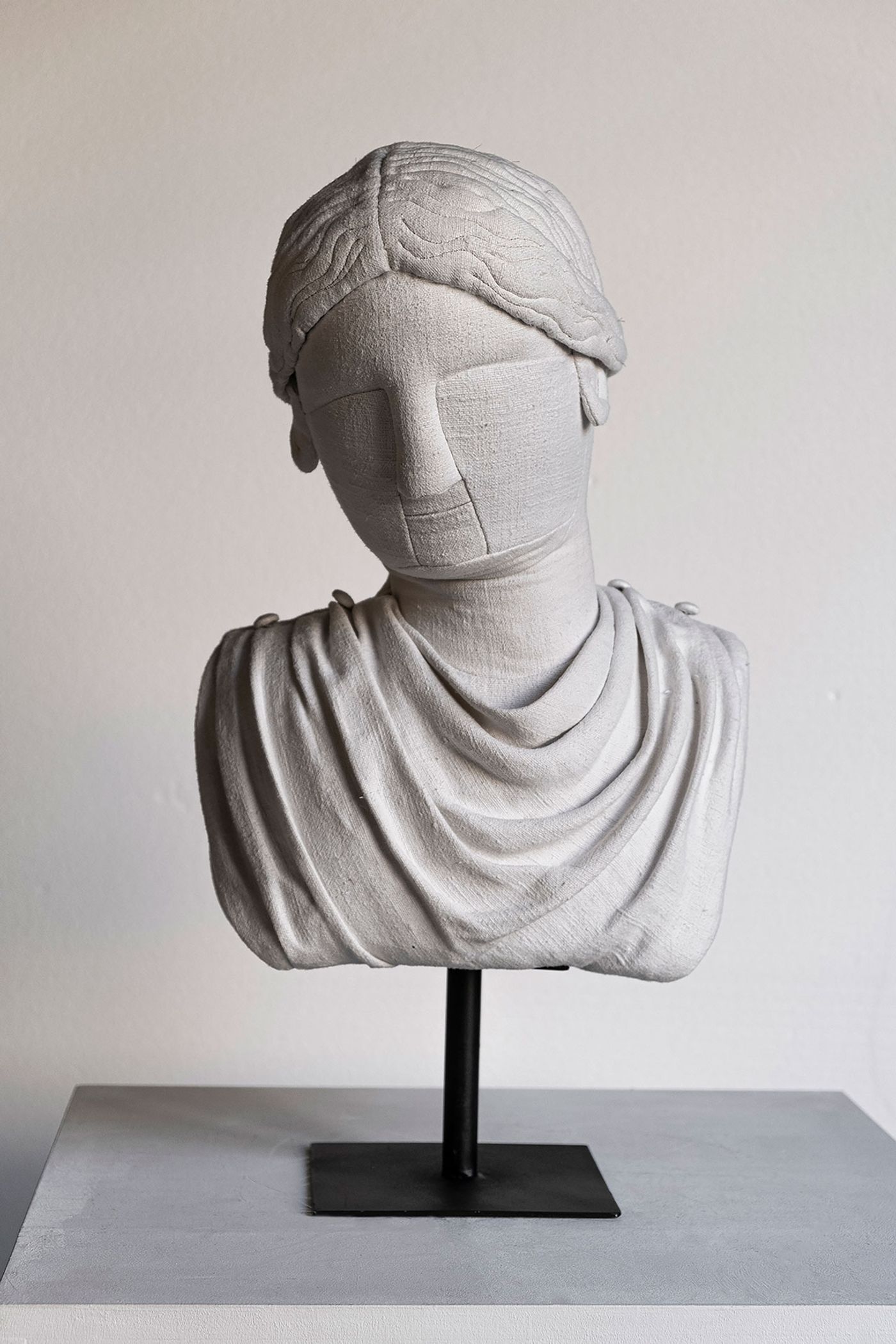
Selene.Photography © Sergio Roger.
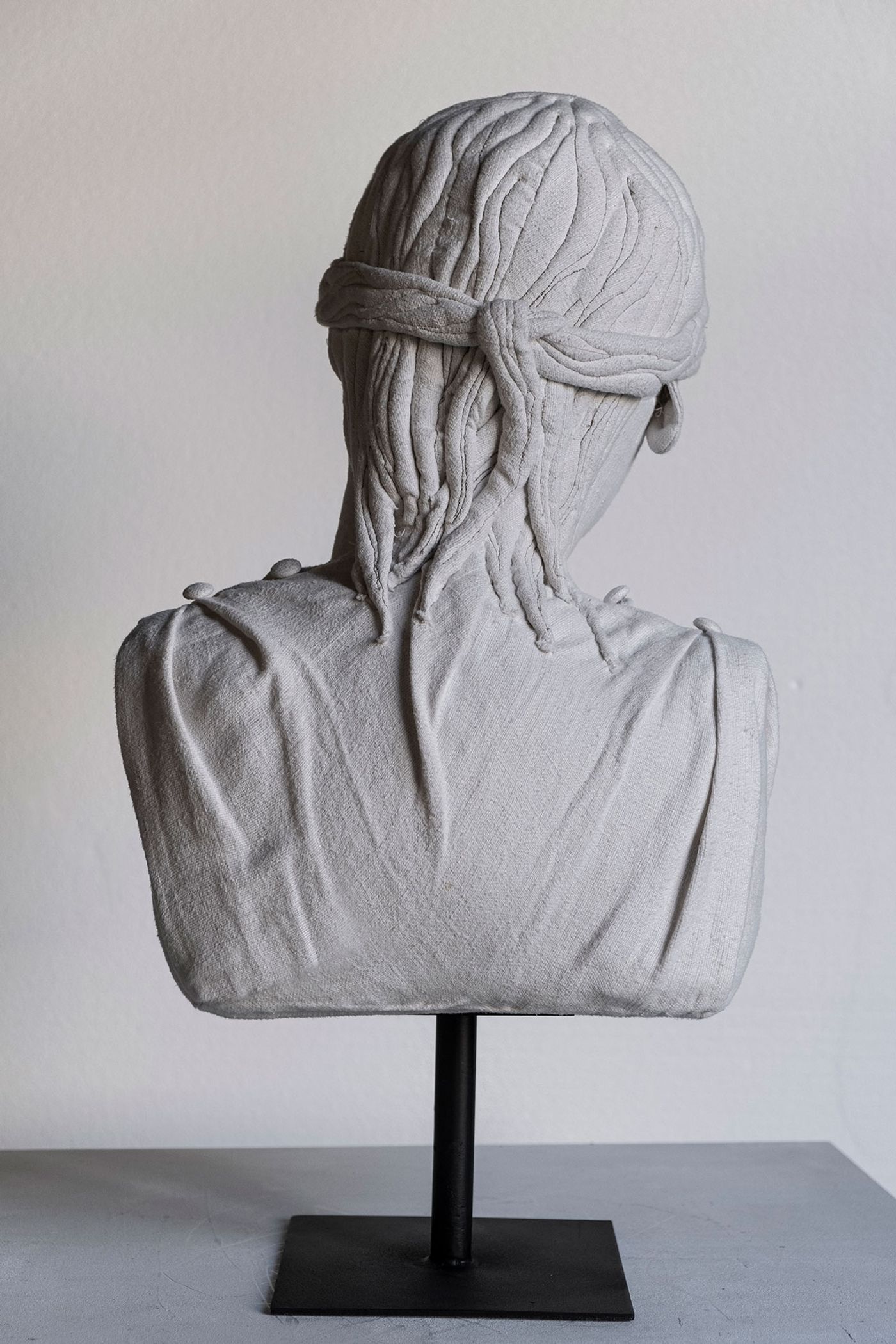
Selene.Photography © Sergio Roger.
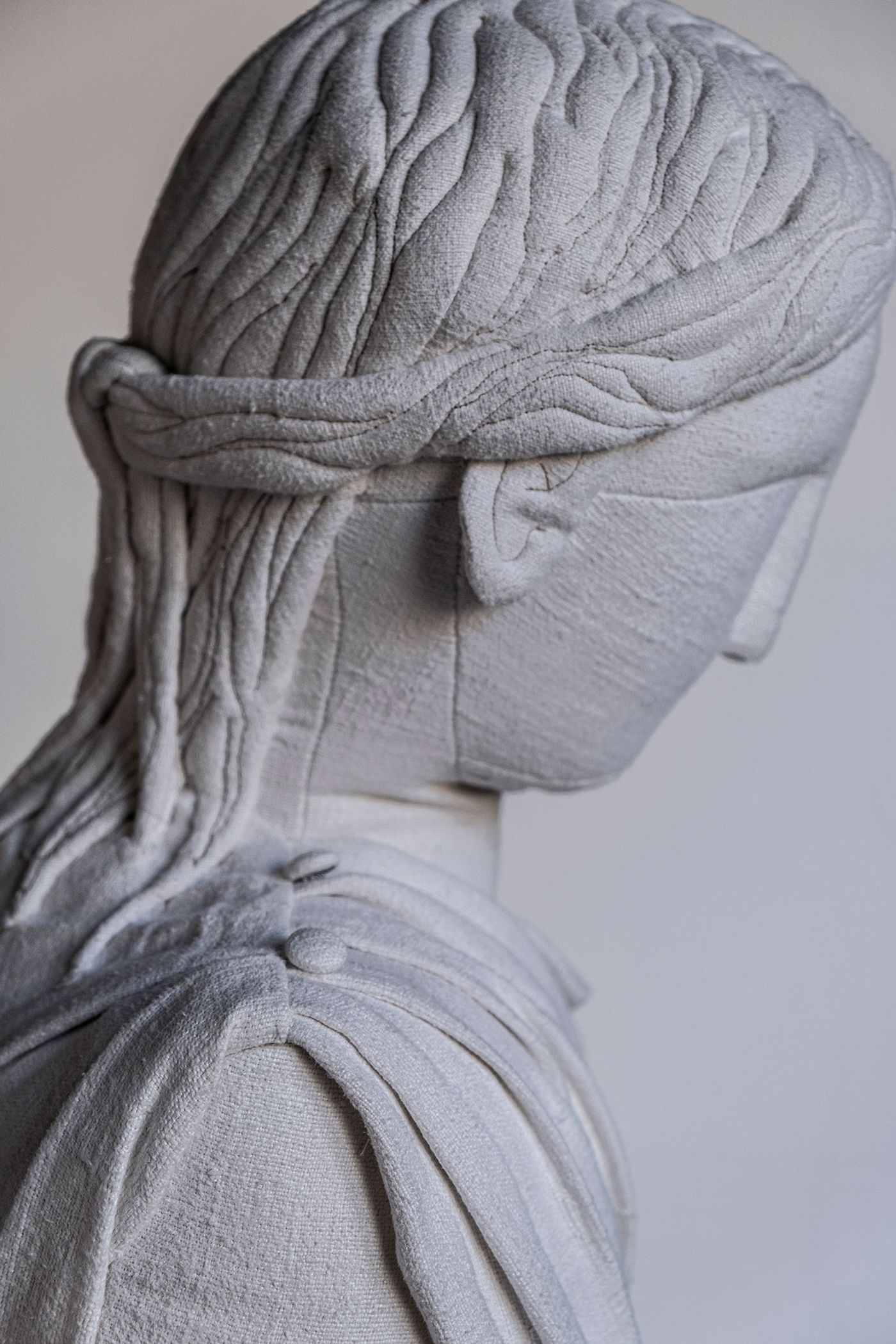
Selene.Photography © Sergio Roger.
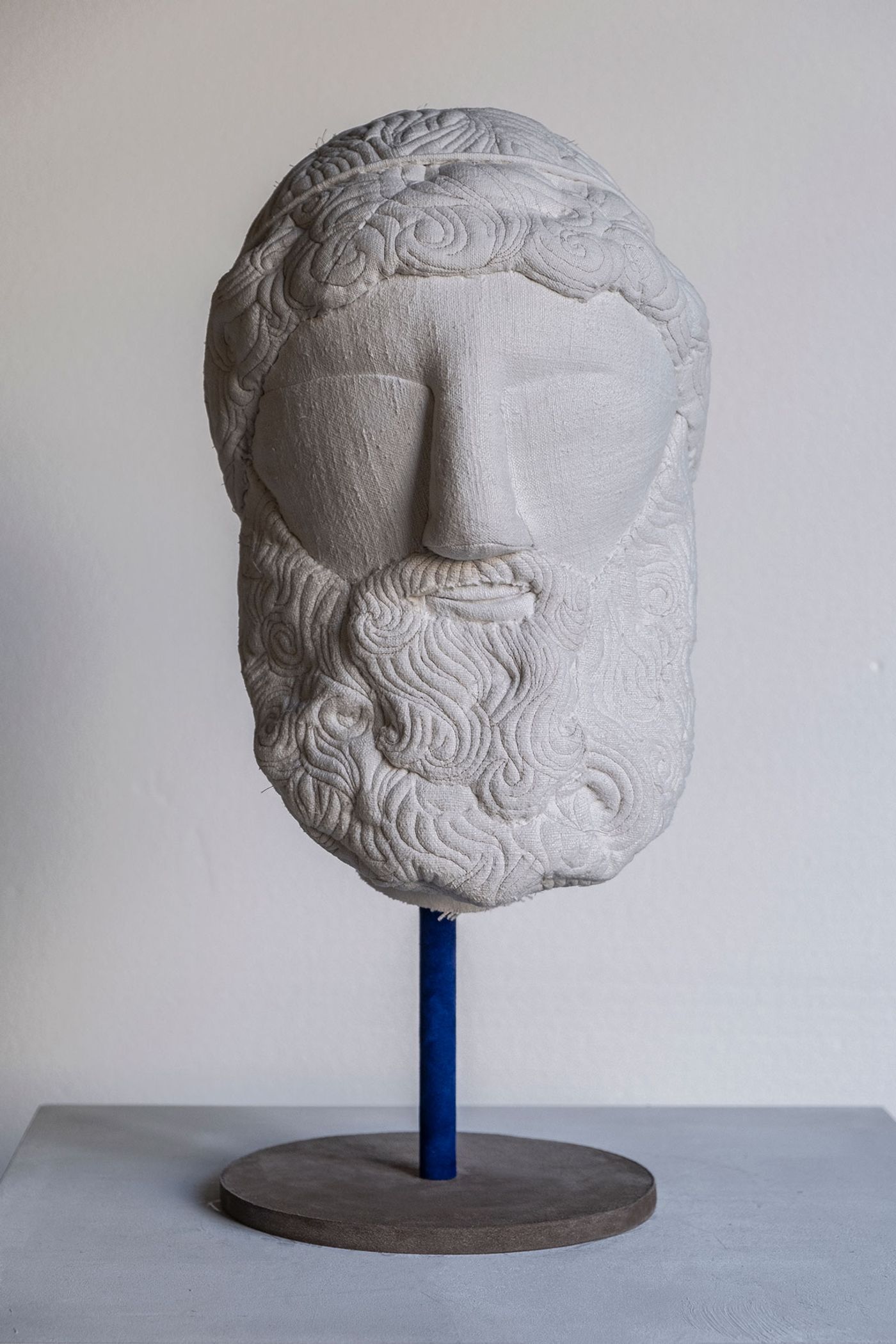
Jupiter.Photography © Sergio Roger.
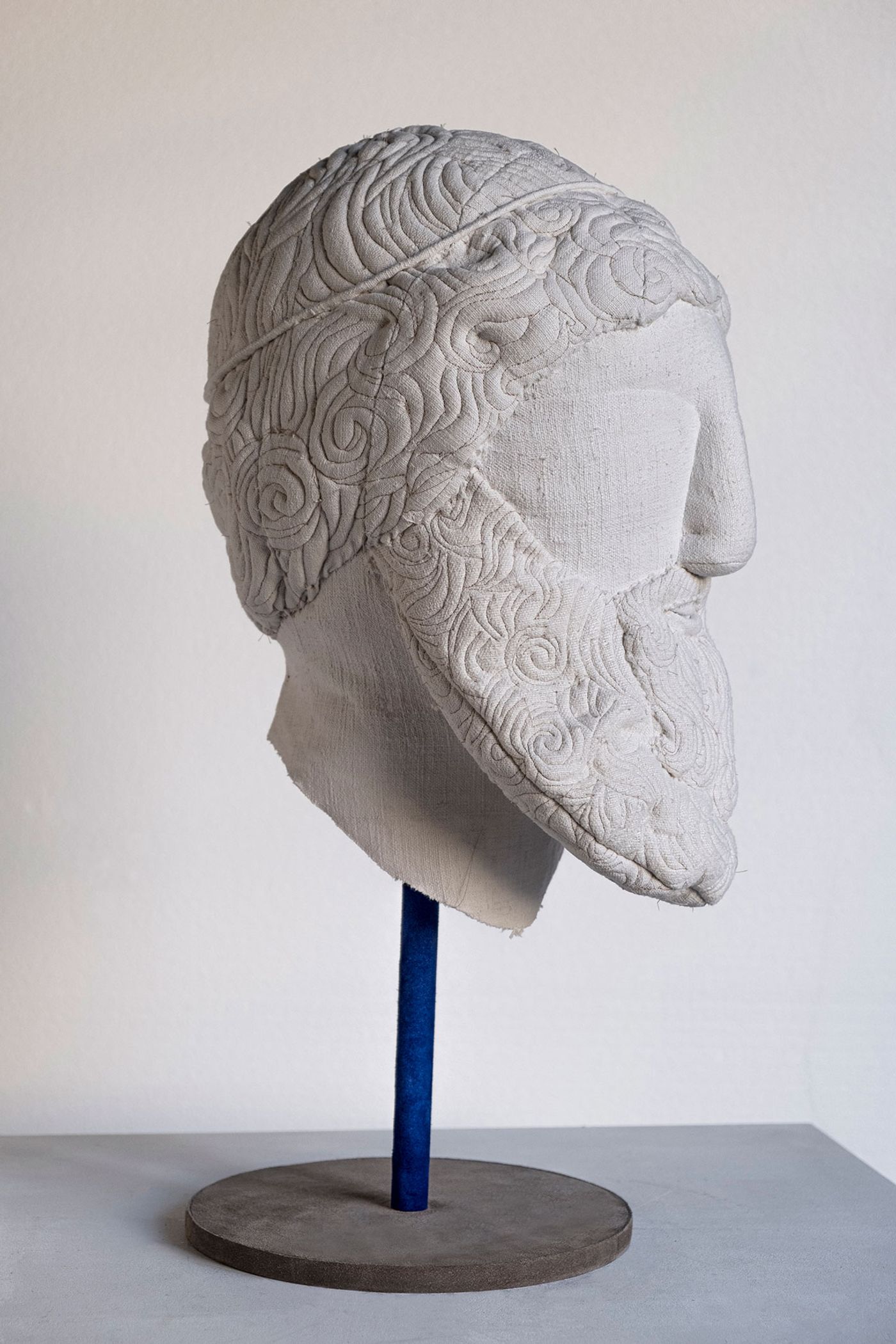
Jupiter.Photography © Sergio Roger.
There’s something quite subversive and whimsical in replacing the hardness and heftiness of marble with the softness and lightness of fabric. The same goes for marrying sculpture with dressmaking, the former associated with timelessness and the latter with ephemerality. How important are such contradictions in your work and what is their significance?
We associate sculptural art with permanent and noble materials like stone or bronze. By replacing these with something as fragile and delicate as linen, the objects suddenly obtain a completely new meaning. My aim is to break away with our perception on traditional sculpture but also to reflect on the idea of permanence.We constantly forget that before the world as we know it, countless civilizations preceded us. Some of them were extremely prosperous lasting thousands of years. Indeed, the current pandemic highlighted how fragile our reality really can be. Through my art, I wish to make an appeal for humbleness, a reminder that we should be more respectful with each other and our environment. Otherwise history will repeat itself.
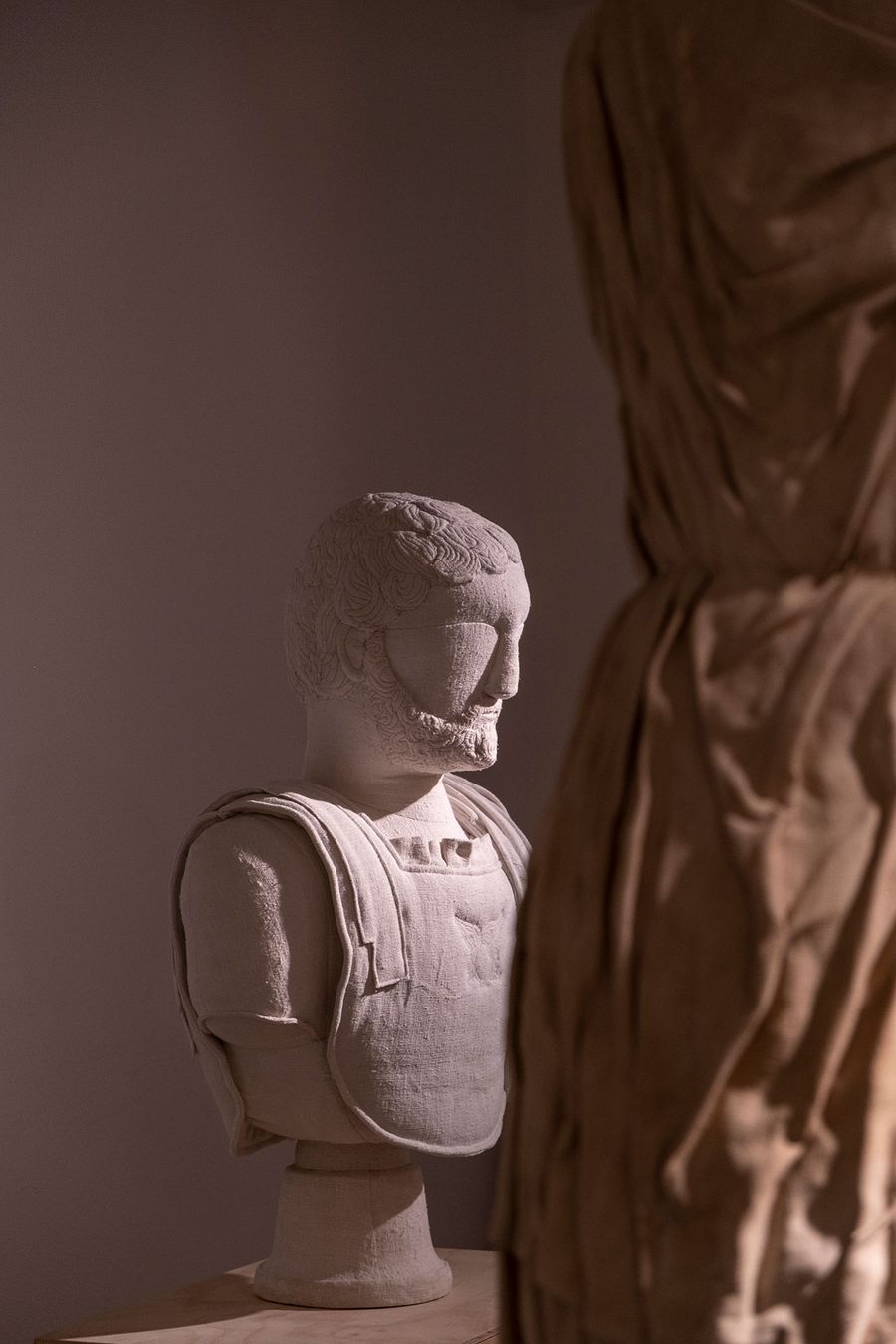
Exhibition view. Rossana Orlandi gallery, Milan.Photography © Sergio Roger.
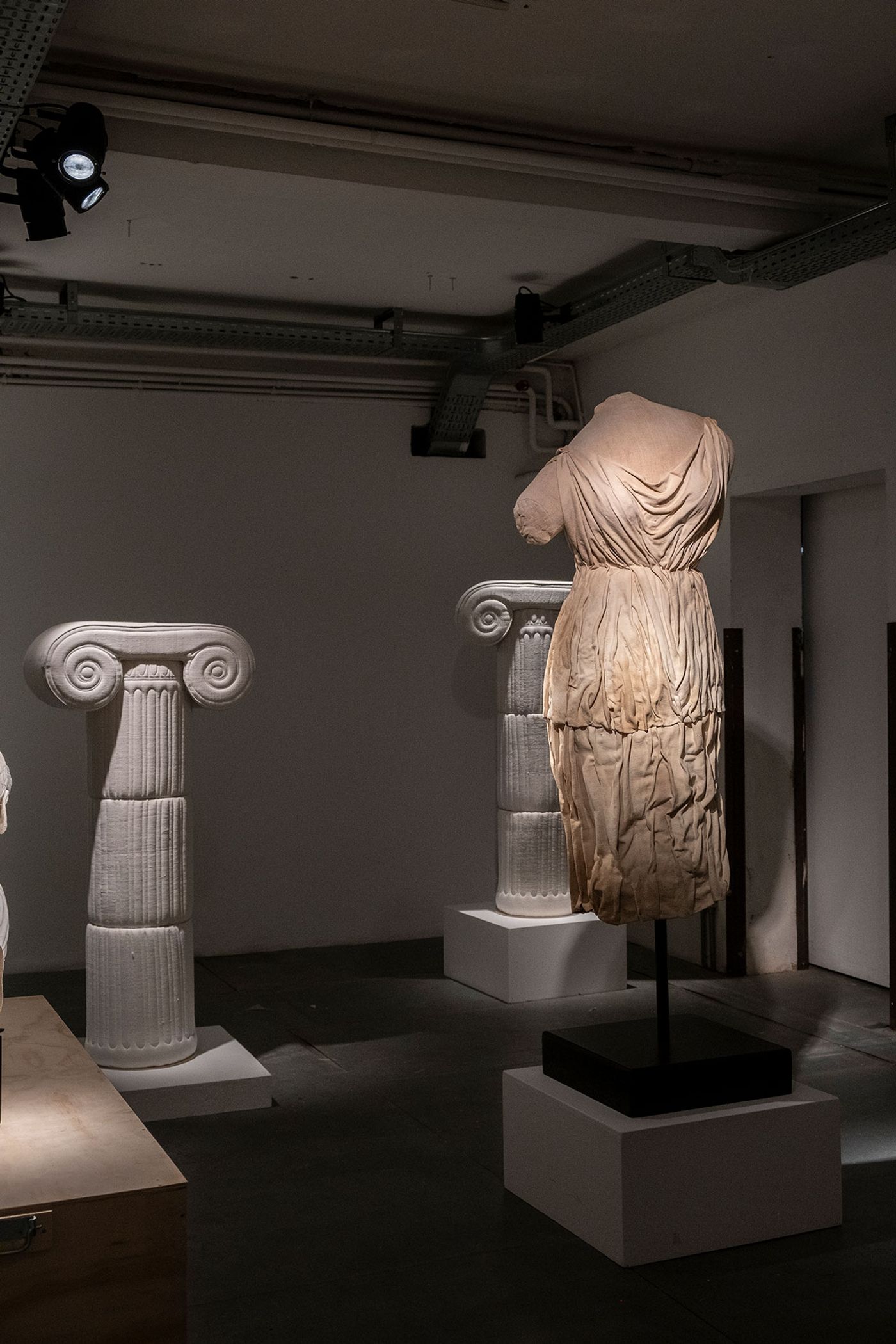
Exhibition view. Rossana Orlandi gallery, Milan.Photography © Sergio Roger.
Apart from classical art, have you considered incorporating other artistic movements into your work?
My inspiration comes mainly from archaeology and antique civilizations. I am currently inspired by the magical use of linen on funerary rituals by the ancient Egyptians.
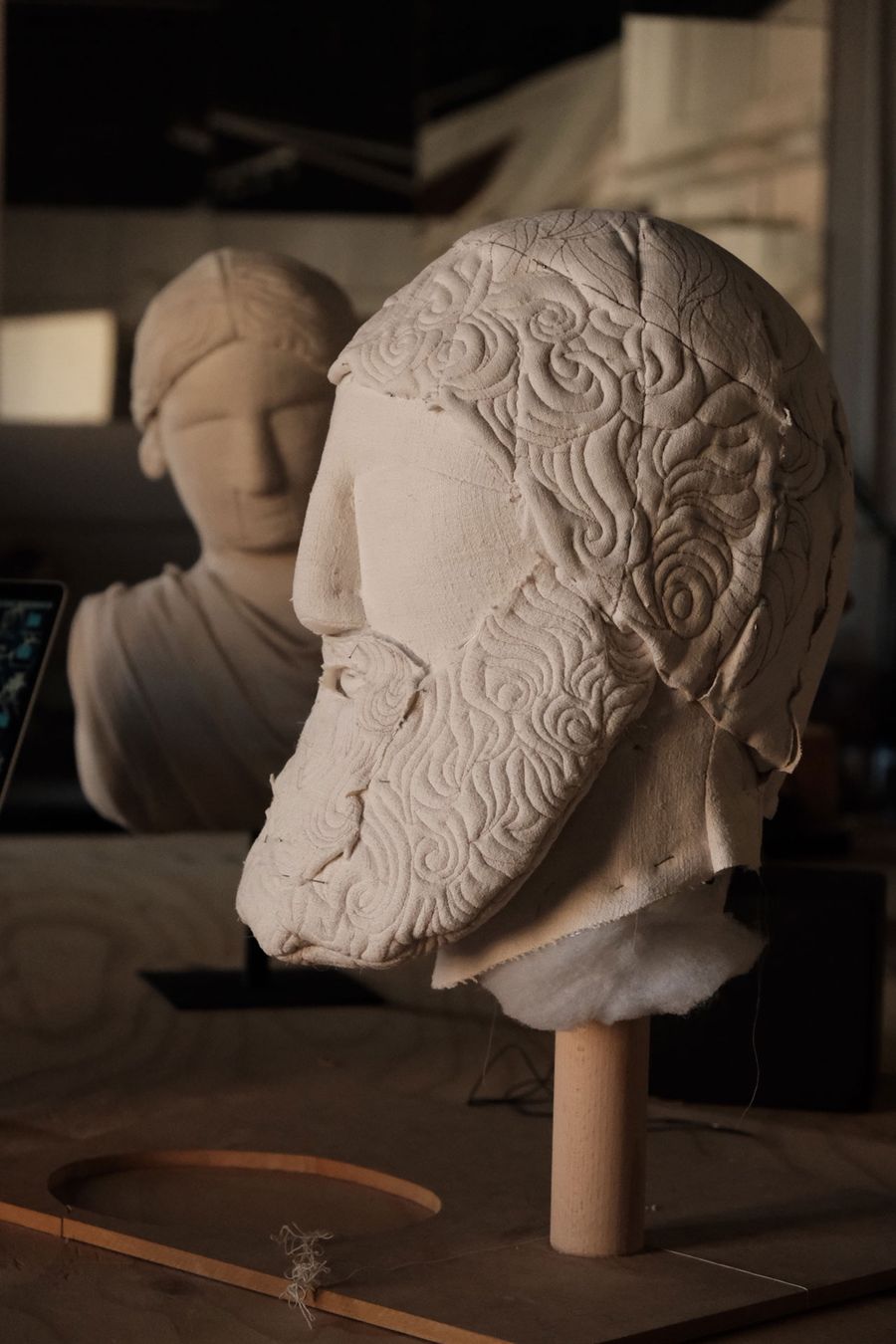
Photography © Sergio Roger.
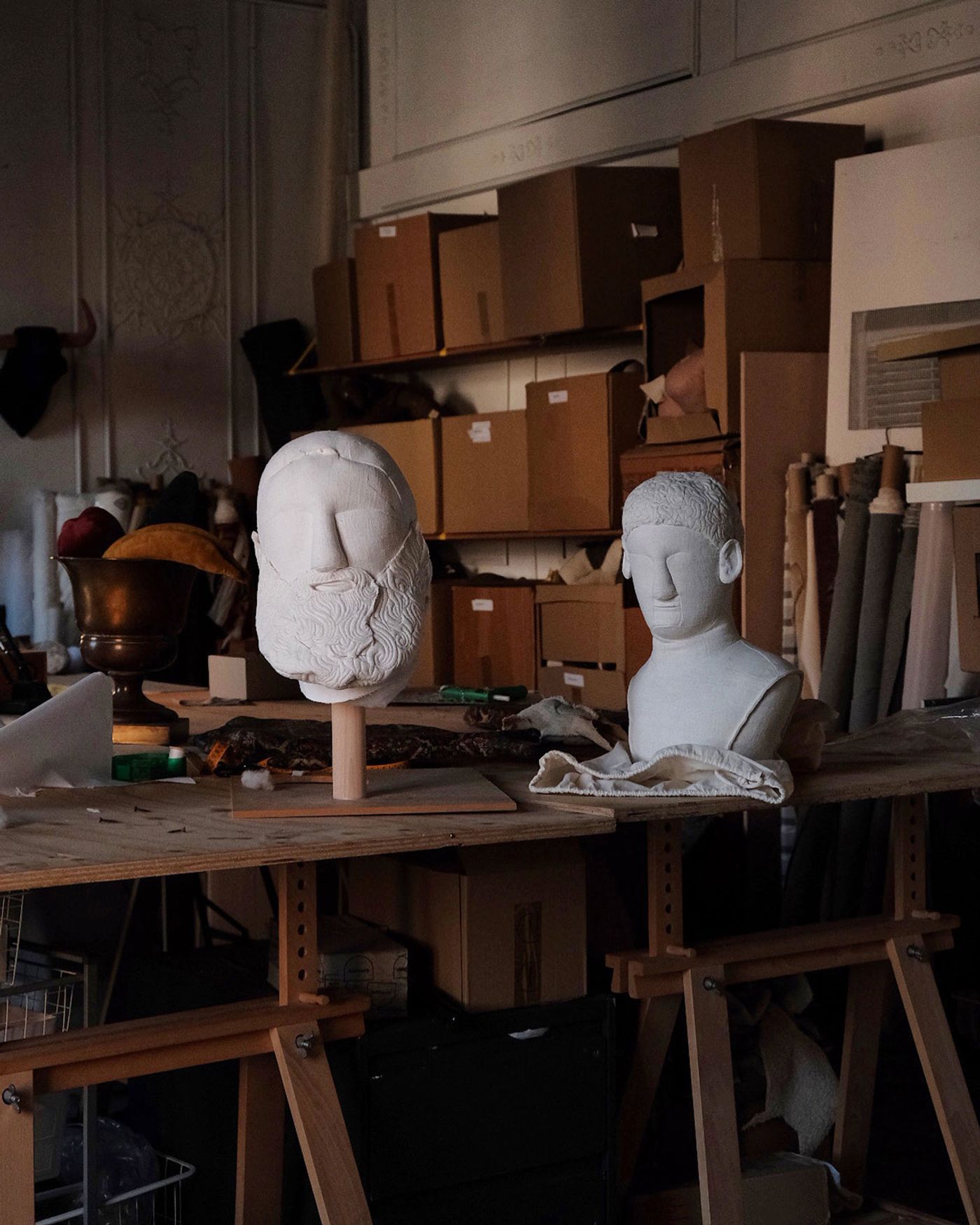
Photography © Sergio Roger.
How did you cope with the pandemic? Did the lockdowns affect your creativity?
The pandemic was actually decisive in terms of my creative process. For me, it created the perfect context where I could work intensively on my art and try out new things with no fear of failure or distraction.
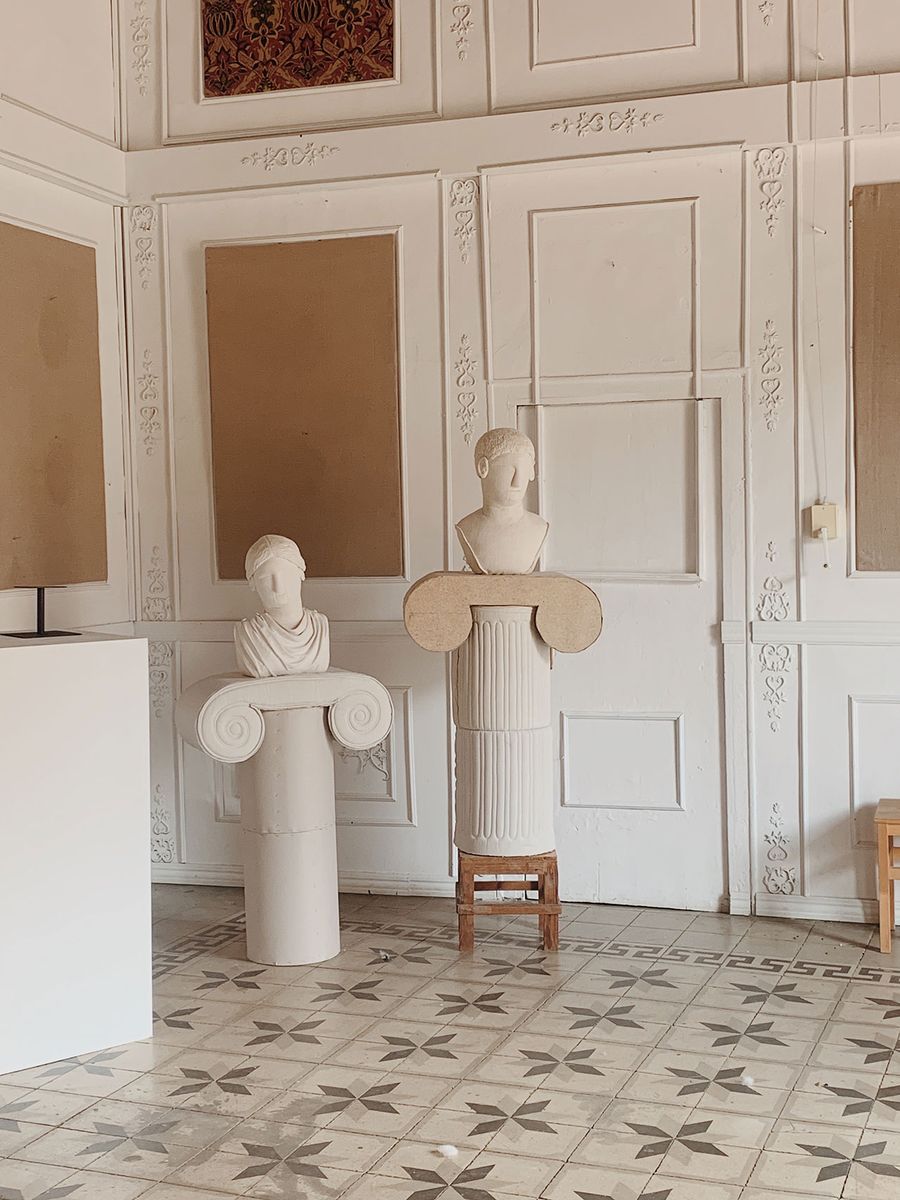
Photography © Sergio Roger.
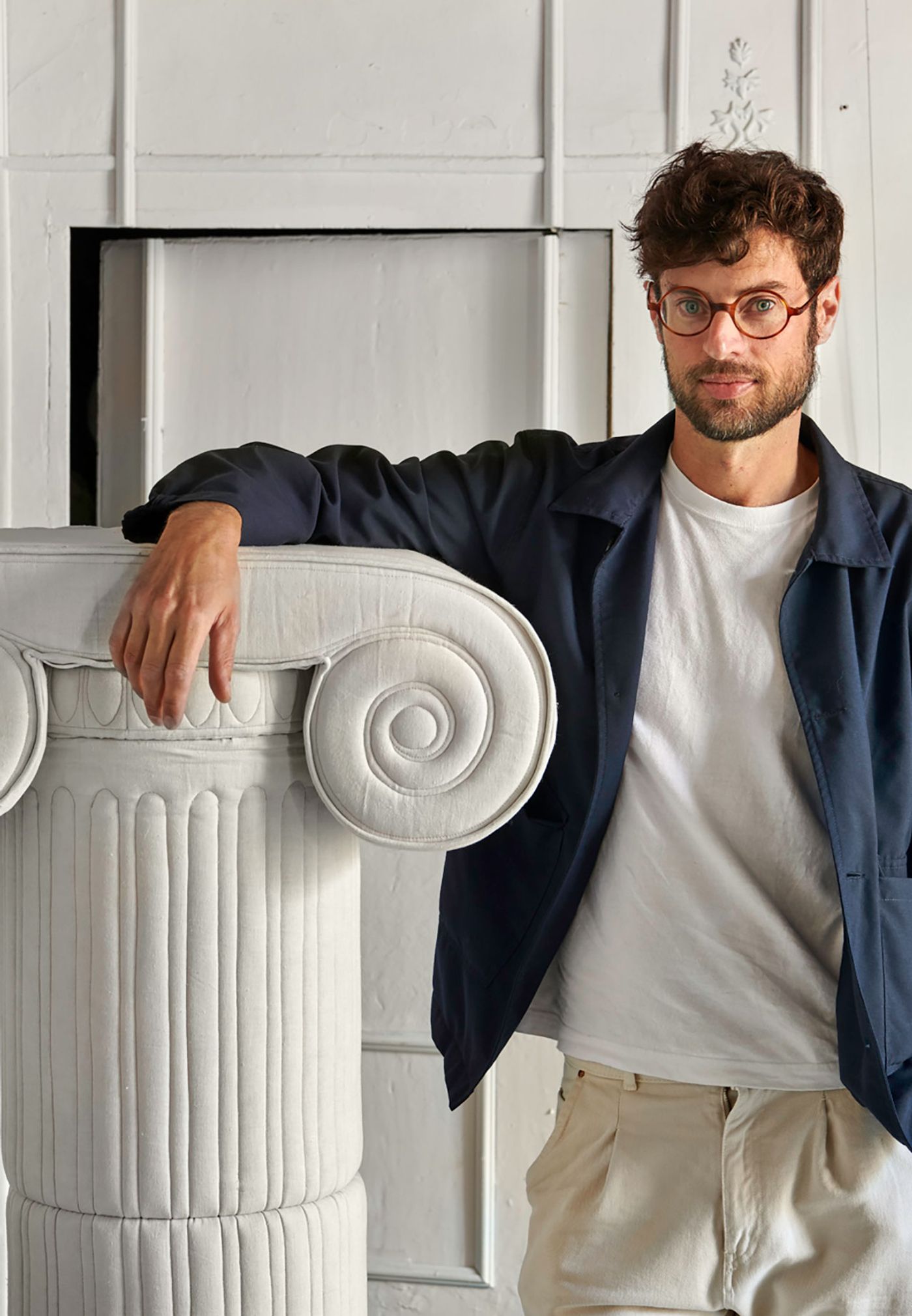
Photography © Sergio Roger.
What are you working on right now? Are there any new projects you are embarking on?
I am exploring the concept of ruins with a special focus on classical architecture elements as well as experimenting with botanical dying in other to replicate the passage of time on stone. I am preparing two new solo shows for Spring 2022; one in Rome and the other one in New York.

Ionic Columns.Photography © Sergio Roger.
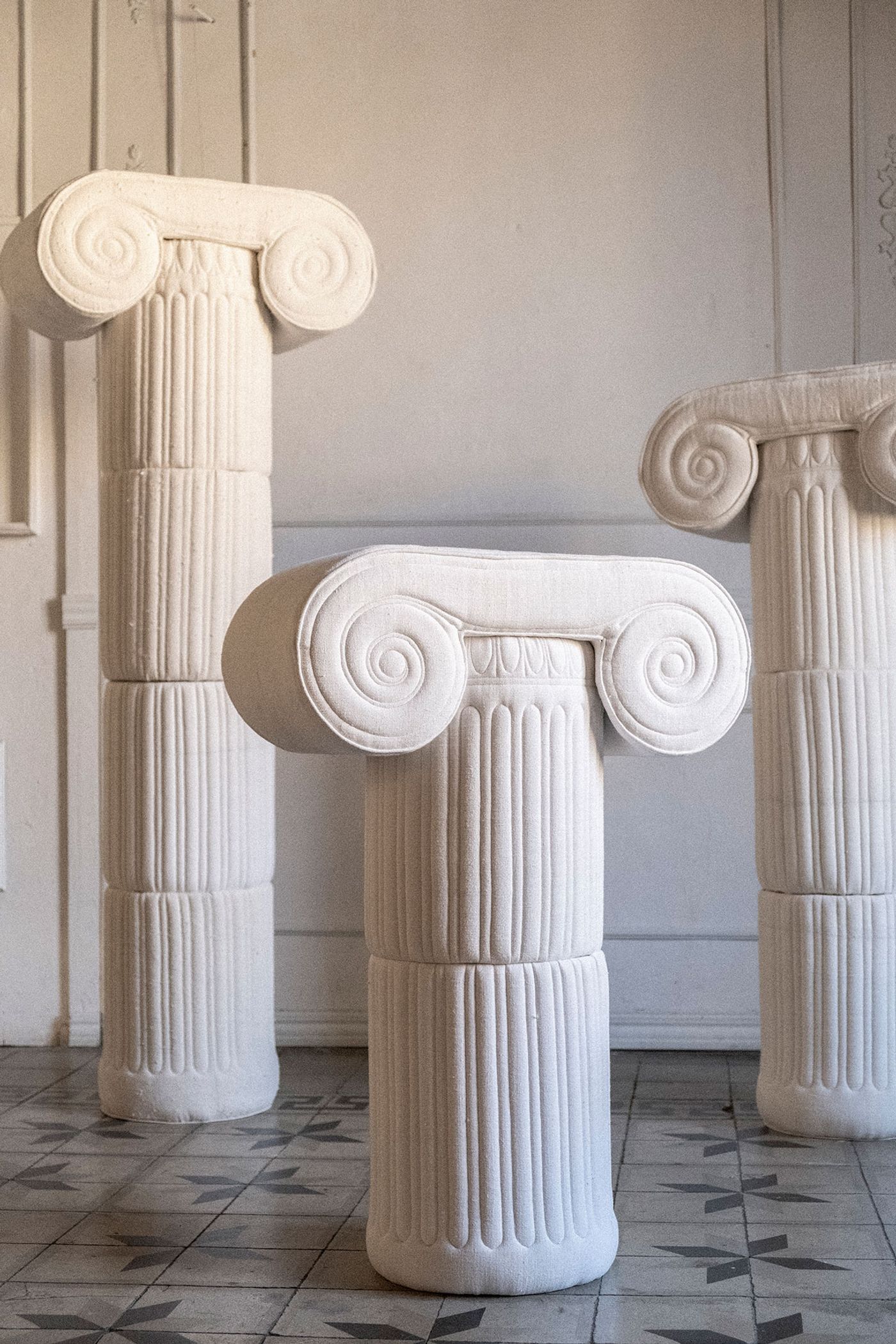
Ionic Columns.Photography © Sergio Roger.